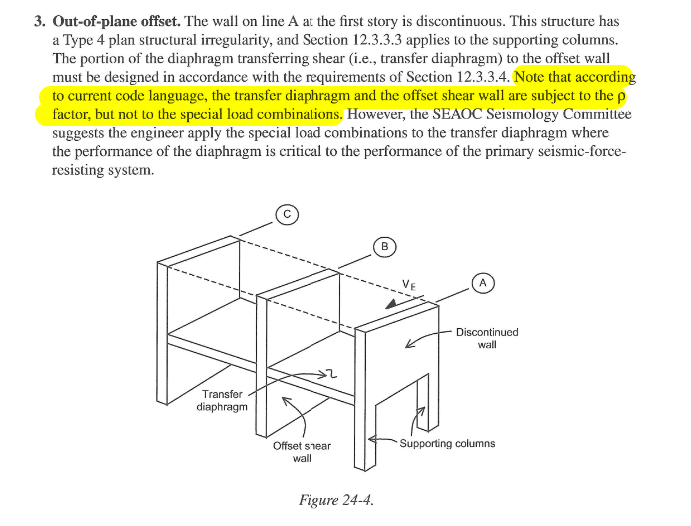Hi all,
I know there has been discussion on this topic previously, but I am seeing lots of varying opinions, both online and in my own office, on the use of overstrength loads for transfer diaphragm design.
To me - 12.10.1.1 is very clear in stating "for structures that have a horizontal structural irregularity Type 4, the transfer forces from the vertical seismic force resisting elements above the diaphragm to other vertical seismic force resisting elements below the diaphragm shall be increased by the overstrength factor before being added to the diaphragm inertial forces". This seems to be cut and dry correct? You have to design the diaphragm (as we are in the diaphragm design force section)for the overstrength load from seismic transfer forces.
What are other's thoughts on this?
Both of the below references take a different approach:
Even the SEAOC 2018 VOL-1 book makes a similar statement. They recommend using overstrength, but it isn't specifically required. Refer to Design example 24 (attached).

I know there has been discussion on this topic previously, but I am seeing lots of varying opinions, both online and in my own office, on the use of overstrength loads for transfer diaphragm design.
To me - 12.10.1.1 is very clear in stating "for structures that have a horizontal structural irregularity Type 4, the transfer forces from the vertical seismic force resisting elements above the diaphragm to other vertical seismic force resisting elements below the diaphragm shall be increased by the overstrength factor before being added to the diaphragm inertial forces". This seems to be cut and dry correct? You have to design the diaphragm (as we are in the diaphragm design force section)for the overstrength load from seismic transfer forces.
What are other's thoughts on this?
Both of the below references take a different approach:
Even the SEAOC 2018 VOL-1 book makes a similar statement. They recommend using overstrength, but it isn't specifically required. Refer to Design example 24 (attached).

